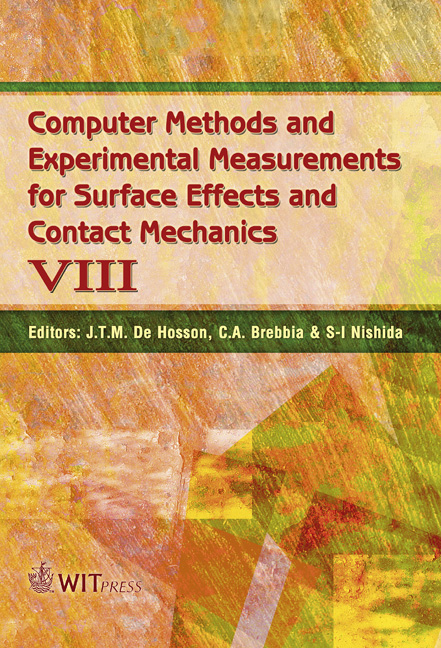Numerical Analysis Of The Influence Of Abrasive Grain Geometry And Cutting Angle On States Of Strain And Stress In The Surface Layer Of Object
Price
Free (open access)
Transaction
Volume
55
Pages
11
Published
2007
Size
1,259 kb
Paper DOI
10.2495/SECM070181
Copyright
WIT Press
Author(s)
L. Kukielka & J. Chodor
Abstract
Grinding is a very complicated technological process. To increase the quality of the product and minimize the cost of abrasive machining, we should know the physical phenomena which exist during the process. The first step to the solution of this problem is an analysis of a machining process with a single abrasive grain. In the papers [Kukielka and Kustra, Surface Treatment VI Computation Methods and Experimental Measurements for Surface Treatment Effects. WIT Press, 2003, pp.109–118; Kukielka et al, Computer Methods and Experimental Measurements for Surface Effects and Contact Mechanics VII. WIT Press, 2005, pp. 57–66.] the thermo-mechanical models of this process are presented, but in this work attention is drawn to the chip formation and its separation from the object. The influence of the tool geometry and the cutting angle on the states of strain and stress in the surface layer during machining is explained. The phenomena on a typical incremental step were described using a step-by-step incremental procedure, with an updated Lagrangian formulation. Then, the finite elements methods (FEM) and the dynamic explicit method (DEM) were used to obtain the solution. The application was developed in the ANSYS system, which makes possible a complex time analysis of the physical phenomena: states of displacements, strains and stresses. Numerical computations of the strain have been conducted with the use of two methodologies. The first one requires an introduction of boundary conditions for displacements in the contact area determined in the modeling investigation, while the second – a proper definition of the contact zone through the introduction of finite elements of TARGET and CONTACT types, without the necessity to introduce boundary conditions. Examples of calculations for the strain and stress field in the surface layer zones of object were presented. Keywords: abrasive grain, single-grain machining, chip creation, yield stress, FEM, numerical analysis, state of strain, state of stress.
Keywords
abrasive grain, single-grain machining, chip creation, yield stress, FEM, numerical analysis, state of strain, state of stress.





